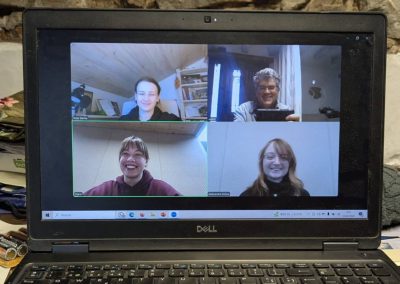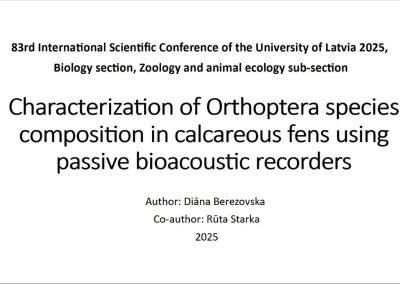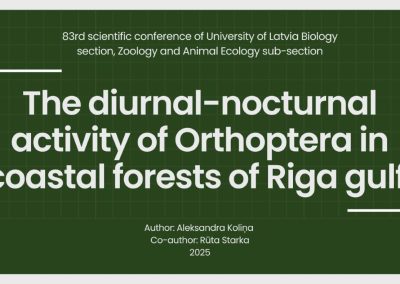Thanks to the network that European orthopterists have been building for many years and the support of TETTRIs, we had the opportunity to present the progress of TEOSS at the Biology section of the recent international congress held in Riga, Latvia. We were honored to be invited to the plenary session and also learned about two Orthoptera bioacoustic studies currently underway in the country.
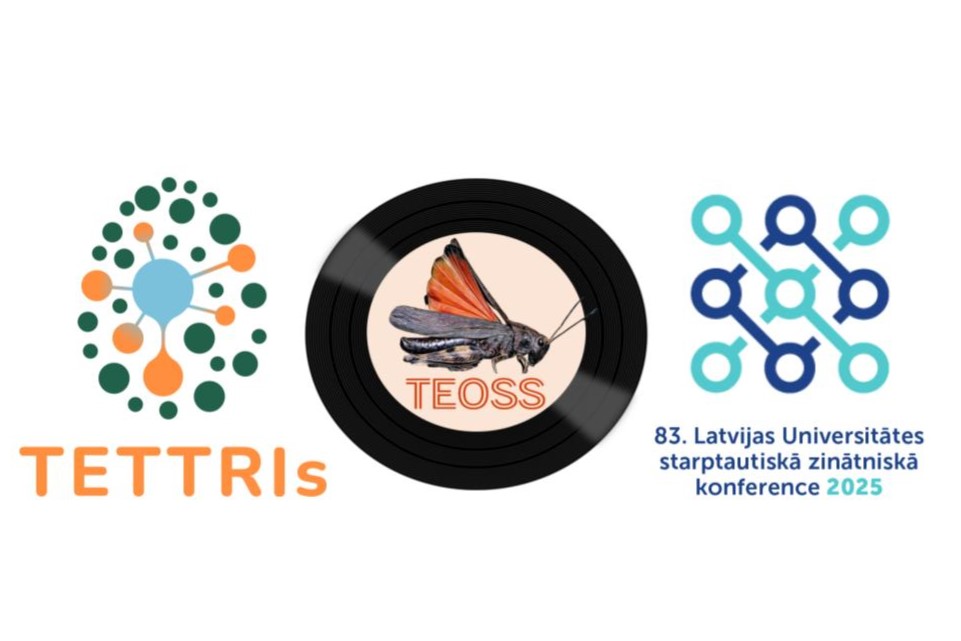
83rd International Scientific Conference of the University of Latvia
First of all, we would like to thanks Asoc. prof. Ainārs Auniņš and Rūta Starka for their invitation and friendly maneer. We presented an updated version of our talk Training the European Orthoptera Sound System (TEOSS) with Baudewijn Odé as the actual speaker. Abstracts from the conference.
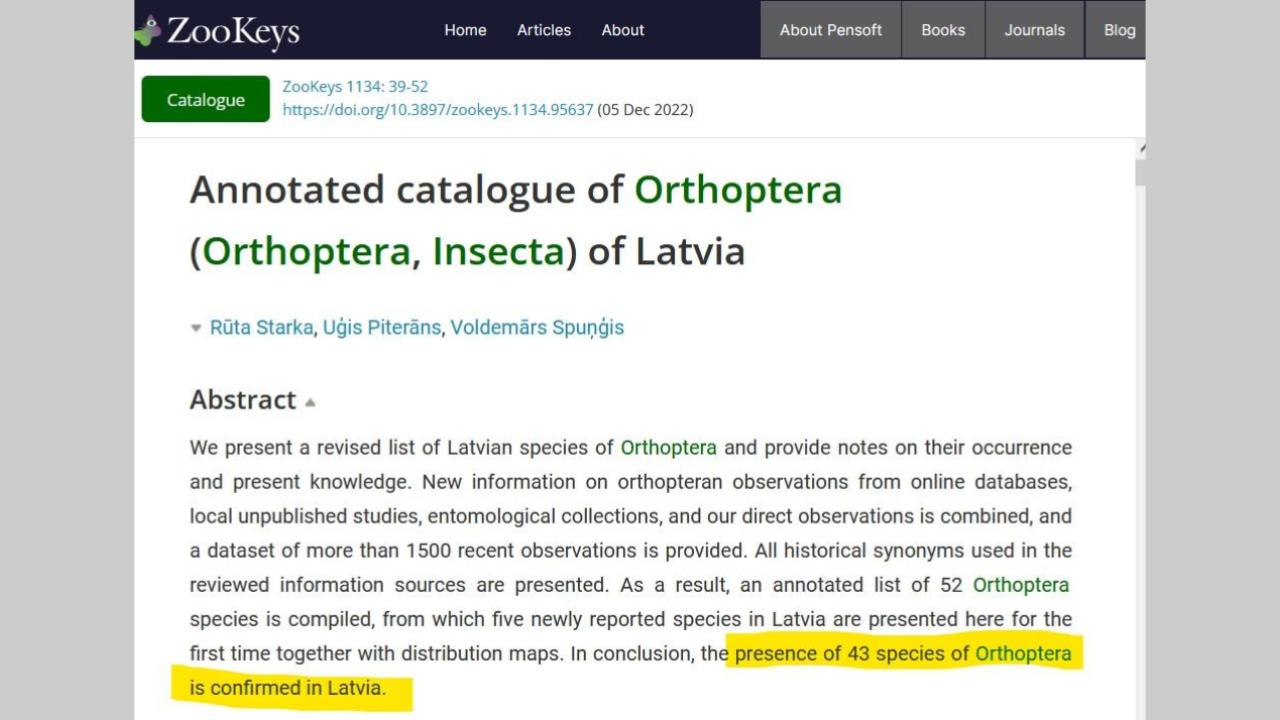
Latvian Orthoptera biodiversity has been extensively revised in recent years, with a catalogue published in 2022. The fauna is, of course, very different from Mediterranean regions, casting attractive species, especially in bogs and mires.
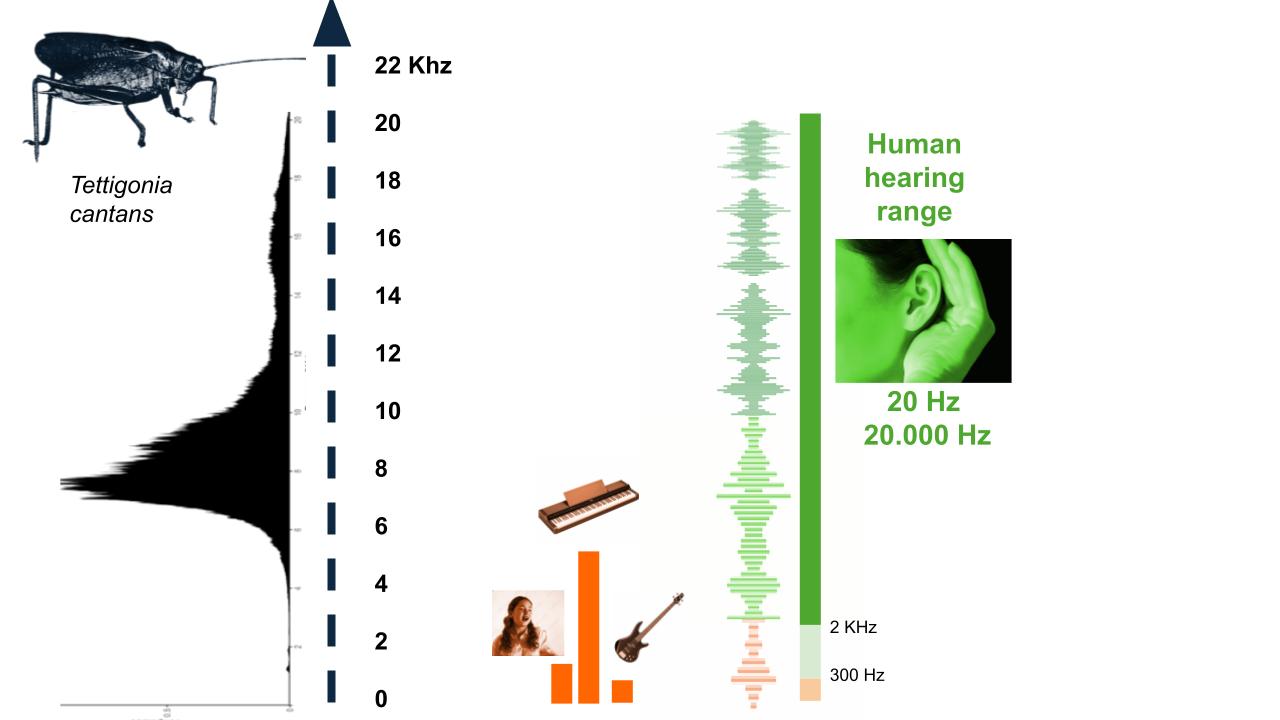
Tettigonia cantans is one of the commonest Orthoptera in Latvia. Interestingly, its range of sound production mostly overlap human hearing range (well, at least for young people). It is a good species to assess the natural decay of our hearing perception. Of course, other Ensifera produce higher pitch by several orders ! Those are not audible at all… In fact, they do not “sound”, we could say they only “ultra-pitch”.
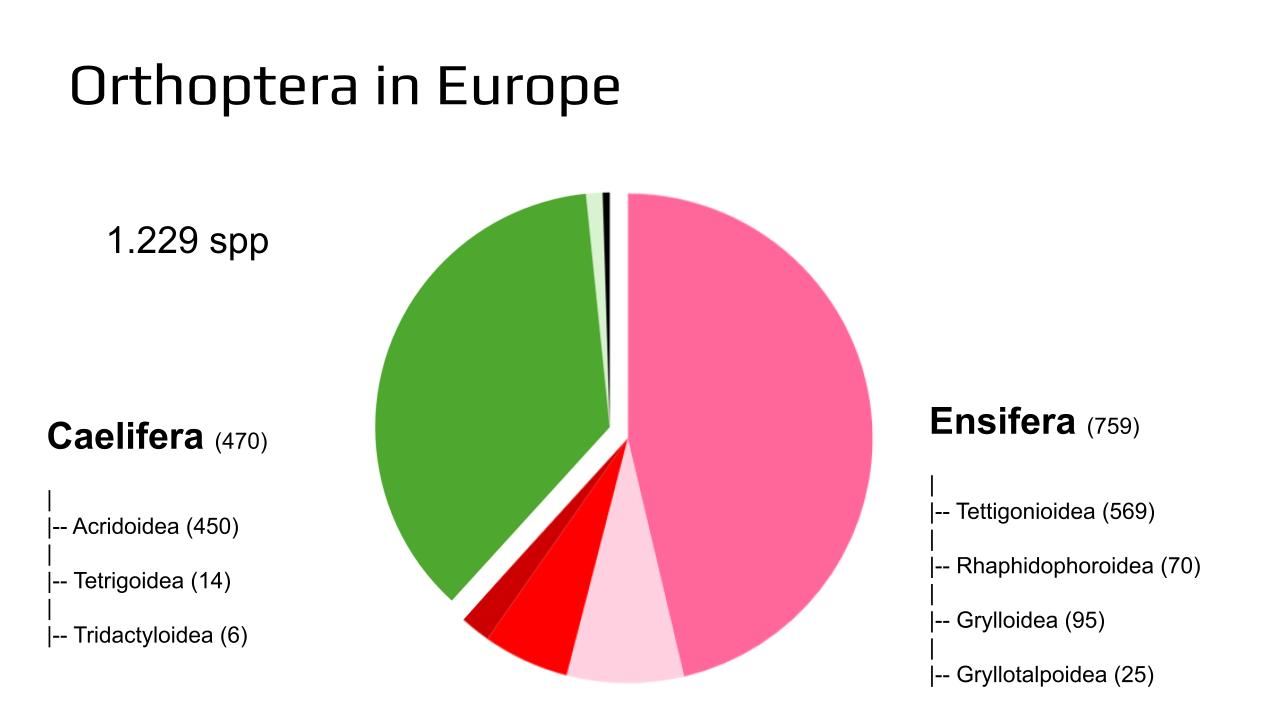
Overall Orthoptera richness in Europe, one third of grasshoppers and the vast majority of crickets and bush-crickets. An updated checklist of European Orthoptera has just been published. Around two third of the species produce meaningfull sound for identification purpose.
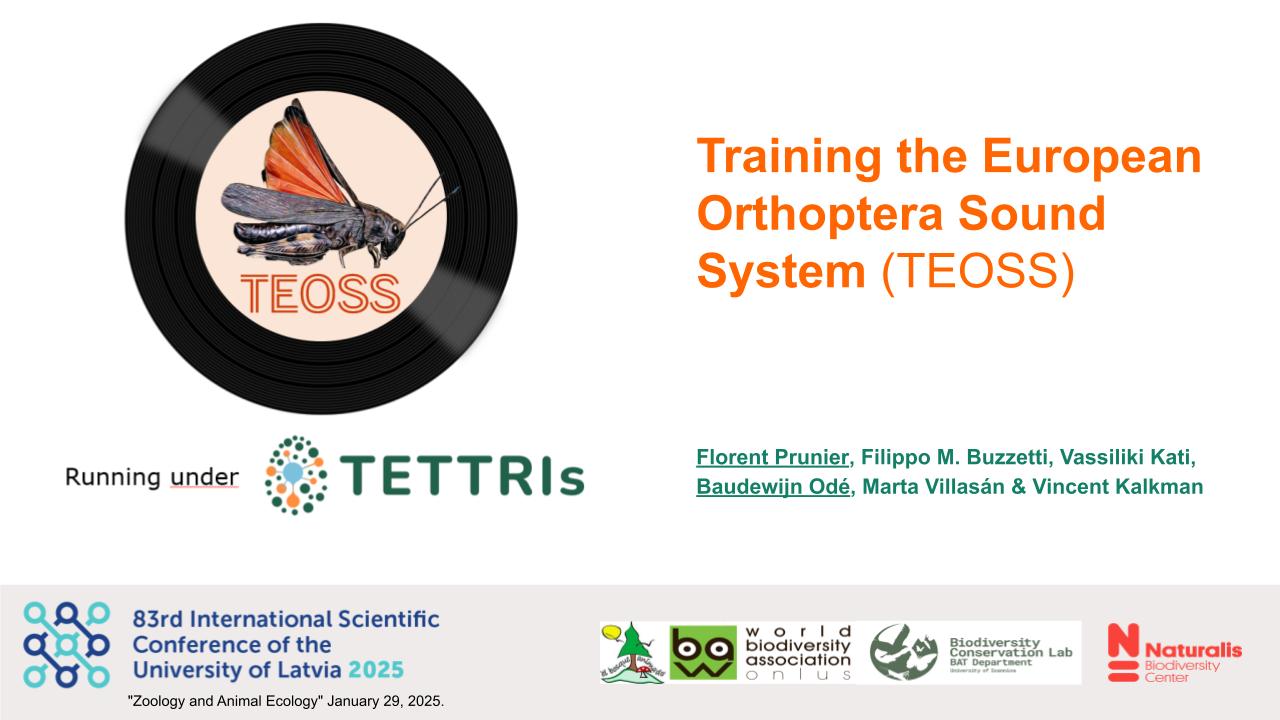
TEOSS team at 83rd International Scientific Conference of the University of Latvia.
Meeting with Latvian Orthoptera scholars
The conference featured also two students preparing their mid term thesis on the bioaccoustics of Orthoptera under the guidance of Rūta. A summary of their research is also, of course, available in the Book of abstracts (pp. 18 and 19).
Aleksandra Koliņa The diurnal-nocturnal activity of orthoptera in coastal forests of Riga gulf.
Diāna Berezovska Characterization of orthoptera species composition in calcareous fens using passive bioacoustic recorders.
Both used the technology of Audiomoth designed for passive monitoring, which allows for capturing huge number of records (by the thousands) in a very short period of time. The continuous recording allows to survey the activity of Orthoptera in the field all day long, and it was really nice to see the differences of activity between habitat types.
While Orthoptera are active all day and night long in Cladium bogs, they are mostly singing at night within the forest. With only two weeks of sampling, the results are strongly supported by data. We can only imagine how much hard field work would be necessary for a trained entomologist to gather the same data…
It was nice to meet online again in February to exchange without rush on our mutual interest. We concluded there was scope for plenty of improvement with the coverage of Orthoptera in the platform Xeno Canto. Uploading sounds recorded with Audiomoth systems, which are cheap and not covering the full spectrum of ultra sounds, will improve the capacity of the model to identify Orthoptera sound tracks based on lesser sophisticated material. This is also important in order to set up large scale surveys based on similar passive recorders.
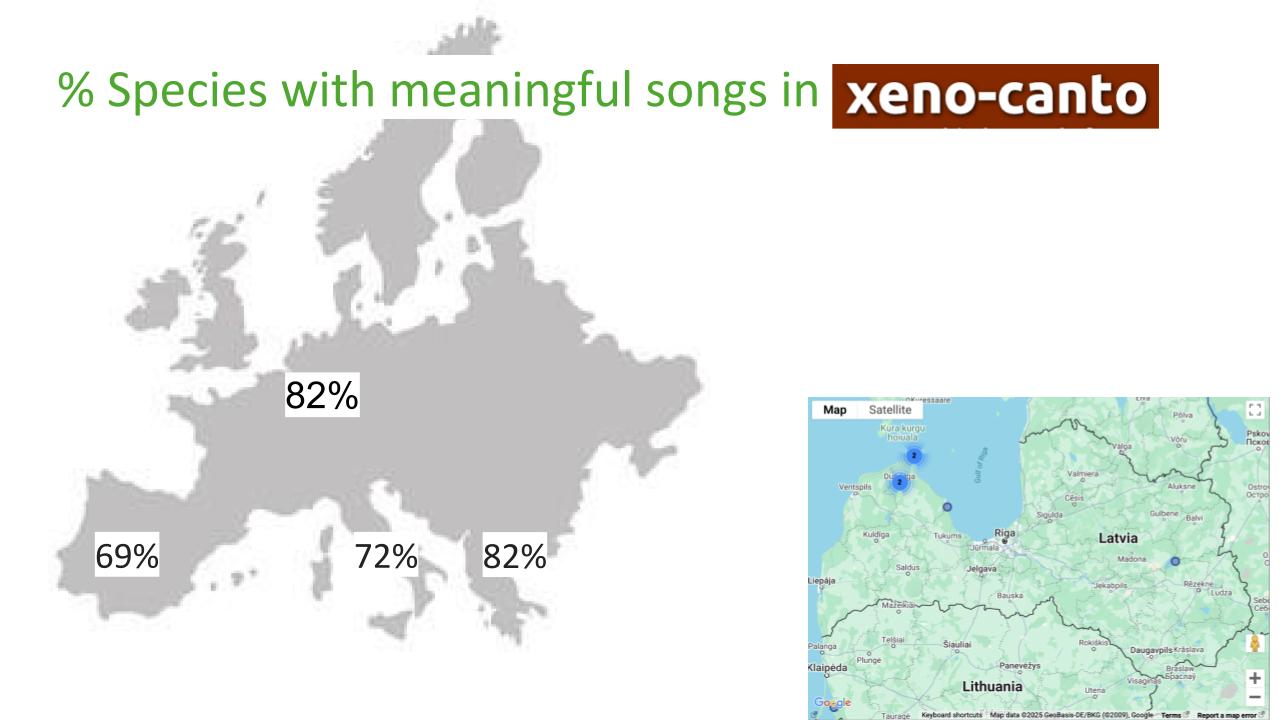
The state of Xeno Canto coverage for Orthoptera species. On the right, the extension of sound recordings uploaded to XC platform. There is scope for improvement in near future.
As a NGO committed to Environmental Education, we are excited about the potential of TEOSS workshops to unite young Europeans in a shared scientific endeavor across the continent.


Funded by the European Union. Views and opinions expressed are however those of the author(s) only and do not necessarily reflect those of the European Union or REA. Neither the European Union nor REA can be held responsible for them.

